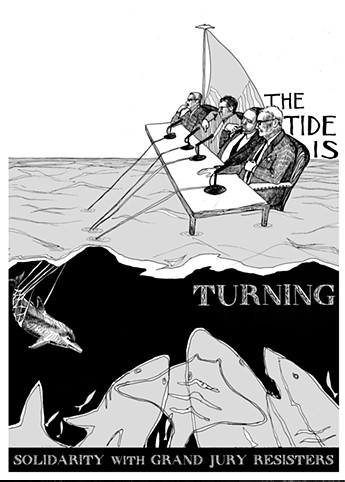From Idaho Statesman. Dec. 2:
Stimulus program created forest jobs, only they went to foreign workers
A Department of Labor Inspector General’s report shows that much of the money spent to create jobs in national forests worked.
Unfortunately, the jobs went to foreign workers and Oregon Democratic Sen. Jeff Merkley wants to change that. The report is limited to Oregon but some of the same companies listed in the report do business in Idaho.
That suggests that in some of the counties in Idaho hit worse by unemployment, stimulus jobs went to foreign workers, not the unemployed timber workers in Idaho.
Here’s how it worked
The H-2B visa program allows employers to hire foreign workers if they can establish that no Americans are qualified or available for the work. But the rules do not necessarily require that companies advertise open positions in the states where the work actually occurs. The report showed that no Oregonians applied for the jobs because the employers only advertised the positions in California, Washington, and Wyoming.
Here are the companies named in the report: Medford Cutting Edge Forestry, Summitt Forestry, Inc. and Ponderosa Reforestations, Inc.
So I’m guessing if they had work in Idaho, these same companies didn’t advertise here either. If you know something about this e-mail me.
Merkley wants the Director of each State Workforce Agency approve of each H-2B application and attest that the employer has complied with all program rules. Currently, all H-2B applications are certified by the Department of Labor out of its national processing office in Chicago.
He also wants the Department of Labor and the Office of Management and Budget reform the H-2B program by enhancing the requirements for domestic recruitment. The changes would expand the recruitment strategies of hiring firms to ensure that job listings were advertised in appropriate local venues, such as job fairs and reputable internet listings.
Shawn Keough, executive director of the Associated Logging Contractors reminded me of the story I did in 2009 about many of her members. Here’s her comments:
“There was language in the stimulus bill that required projects to be awarded to contractors with ‘Hub Zone’ status. At the time Idaho logging contractors who had jumped through the hoops to become Hub Zone certified were few and far between. So, contractors tried to become certified and the bureaucratic process – a nightmare really – wasn’t timely when it did work and most times didn’t. Cong. (Walt)Minnick, Sen. (Mike)Crapo and Sen. (Jim)Risch all tried to expedite the process with mixed success. DC bureaucrats didn’t seem interested in working faster or recognizing their process was redundant, complicated and that there are still some places that don’t have Internet (as required) and if they do it is dial-up.
I’m not certain what happened in the end as several of our members weren’t able to get through the hoops in a timely fashion and went on with life. I do know that contractors from other states ended up with some of the bids and that some of our folks then became sub contractors. I guess we still received some of the benefit and got some needed work done in our forests, but, in my opinion, it was a lousy way to run the program.”
#########################################
 #########################################
#########################################
From Washington Times. Dec. 6:
Washington doesn’t need to regulate rain
If the Supreme Court declines to review it, a recent ruling from the 9th U.S. Circuit Court of Appeals in San Francisco will put federal courts into the business of managing every acre of privately owned timberland in America. Farmers beware. You could be next. In May, the 9th Circuit determined that rainwater draining from forest roads into local streams, rivers and lakes is “point source pollution.” As such, it must be regulated in the same way effluent from sewage-treatment plants is regulated. To make a long story short, rainwater that accumulates alongside logging roads has become a new target of environmental litigators. Several lawsuits were filed within days of the 9th Circuit’s decision.
The court made this determination despite the fact that the Environmental Protection Agency (EPA) has insisted for 35 years that requiring “point-source” permits is unnecessary to protect the environment and is even harmful. In deciding as they did, the judges overturned a long-standing rule that, within reason, the federal judiciary must defer to federal agencies in interpreting laws they enforce.
The main culprits here are the lowly drainage ditch and the only slightly more fashionable culvert, a steel cylinder buried beneath the road surface that directs rainwater away from the road, reducing the threat of flood-caused soil erosion. It is this rainwater that the three-judge panel thinks the federal government must regulate.
Many Americans don’t know that drainage ditches and culverts don’t pollute water. I know that because I grew up in northern Idaho’s great woods and have been fly-fishing in the West for more than 50 years. God only knows how many times I’ve stuck my thirsty mug in a river or stream on a hot summer afternoon, but I can tell you thatgin-clear water passed through countless culverts, under dozens of bridges and alongside miles of forest roads before it reached my parched lips.
By instructing the EPA to oversee every ditch and culvert that runs alongside a forest road, the 9th Circuit is subjecting public and private timber landowners to an unnecessary and costly regulatory labyrinth that won’t make water any more suitable for fish and wildlife than it is now. Worse, every project, no matter its insignificance or urgency, will be appealed and litigated by environmental groups that oppose economically productive use of the nation’s forests.
The economic impact of this case is so significant that the attorneys general in 26 states have filed friend-of-the-court briefs urging the Supreme Court to review the decision, as have the Pacific Legal Foundation, famous for its private property rights advocacy, and several forest industry groups that represent forest landowners large and small. Sen. Ron Wyden, Oregon Democrat, also has weighed in, declaring that letting the court’s decision stand “would shut down forestry on private, state and tribal lands” wherever it is applied.
For 3 1/2 decades, the responsibility for protecting water quality in forests has fallen to the states. They have regulated forestry’s many activities – including road, culvert and bridge construction, repair and operation – under the watchful eyes of EPA enforcers, who relied on science-based “best management practices.” All this comes after the EPA’s 1976 decision that forestry yields non-point–sourcepollutionthat is more effectively managed by drainage ditches, culverts and vegetation than by rules that defy the laws of gravity. No matter – the judges seem to think that even rainstorms need to be regulated by the EPA.
The new administrative burdens the 9th Circuit decision puts on landowners and federal and state government is staggering. The U.S. Forest Service reports there are about 378,000 road miles in our national forests and that it will need about 400,000 permits. By the most conservative estimate, adding in state and private forests nearly doubles that number. Other estimates place the total well into the millions. Simply obtaining the Forest Service’s permits will take 10 years.
Word is that the Supreme Court will decide on Friday whether it will hear this case. Here’s hoping it does. The court might take the occasion to ask why the Court of Appeals found it necessary to overturn 35 years of regulatory precedent. Plaintiff lawyers might also be asked to explain the environmental impacts of not installing roadside drainage ditches or repairing bridges, culverts or roads damaged by flooding. Taxpayers also need an estimate of the economic harm private landowners and their employees will suffer if roads that cannot legally be repaired prevent them from reaching their harvestable timber. Throughout the United States, about 3 million family-forest landowners are engaged in harvesting.
Americans who love to hike will find it hard to believe that when they are out walking amid the splendor of their favorite forest they are, in fact, strolling through toxic industrial sites. In effect, that is what the 9th Circuit has said, and that is why the nation’s forest landowners are hoping the Supreme Court will rescue them from this new and astonishing display of legal revisionism and regulatory zeal.
#########################################
And so, they continue to argue …
#########################################



















It’s going to be end of mine day, but before end I am reading this great paragraph to increase my knowledge.